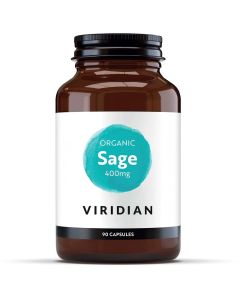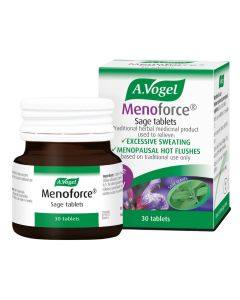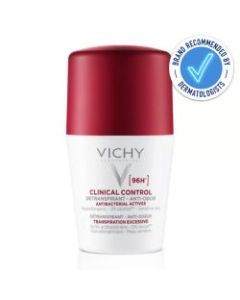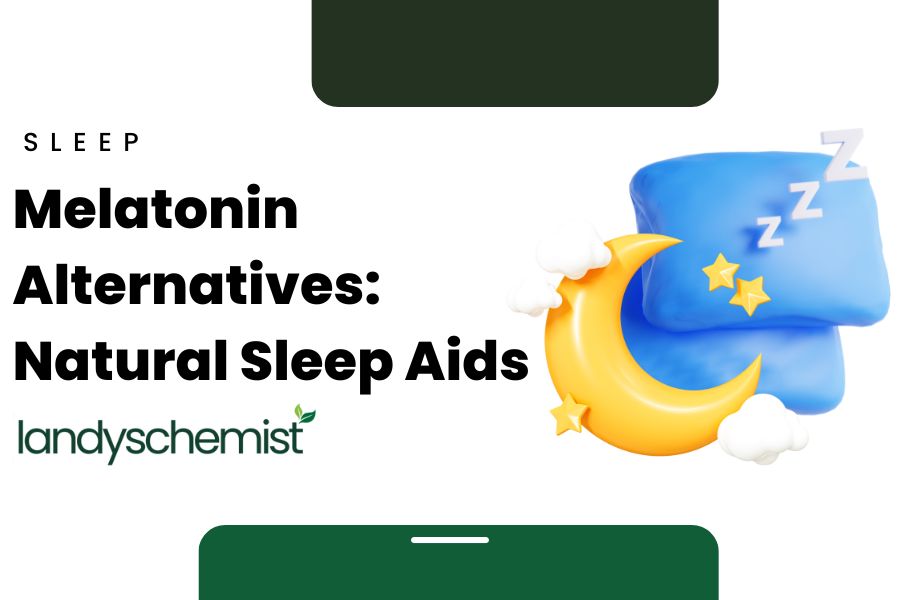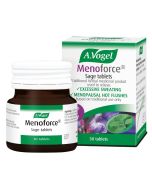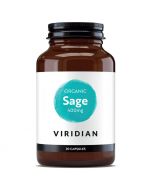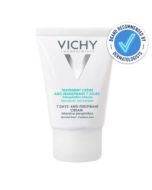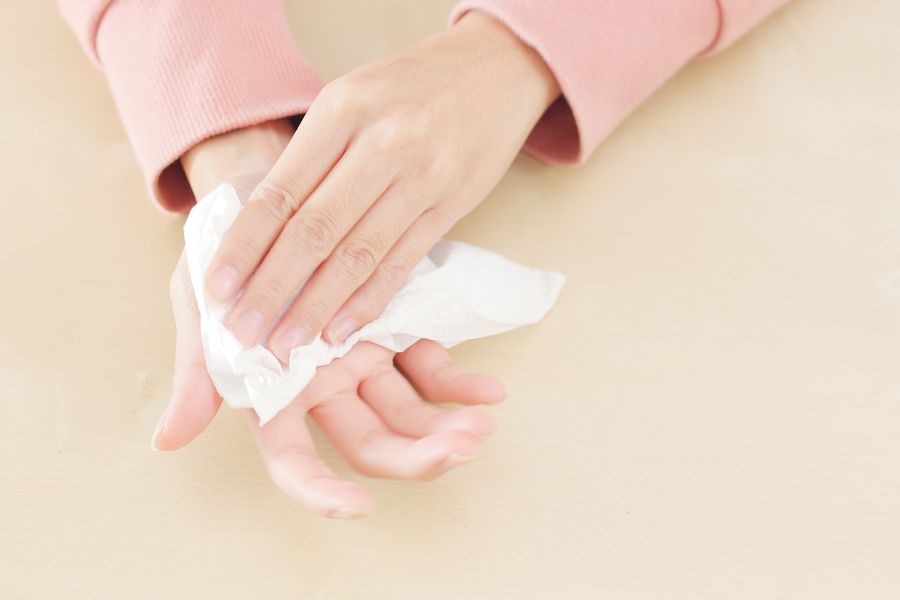
Can Sage Help Excessive Sweating?
Excessive sweating, medically known as hyperhidrosis is a challenging condition that affects individuals on a daily basis and can occur regardless of the body’s needs to cool down. Sweating is a natural and essential bodily function that helps to regulate the body temperature and maintain overall health. However, for those with hyperhidrosis, sweating can become a constant and often disruptive part of their lives.
Hyperhidrosis can have a significant impact on various aspects of daily life, including personal comfort, social interactions, and self-confidence. Excessive sweating can result in discomfort, emotional distress, and a reduced quality of life in some cases. Understanding the intricacies of hyperhidrosis, its causes and management strategies is important in alleviating the physical and emotional burden it imposes.
In this blog, we delve into the world of hyperhidrosis, exploring the cause and triggers and highlight the potential benefits of natural supplements as a complementary approach to managing excessive sweating.
What is Hyperhidrosis
Sweat is an odourless fluid, primarily made of water that is released from your sweat glands (eccrine glands) to help regulate body temperature.
Hyperhidrosis is a medical condition characterised by excessive sweating that surpasses the body’s normal needs for temperature regulation. Whilst sweating is a natural bodily function designed to cool the body down, individuals with hyperhidrosis experience sweating that is disproportionate to the triggers or occurs even in the absence of any apparent cause.
What parts of the body does hyperhidrosis affect
Hyperhidrosis commonly manifests in specific areas of the body, including the underarms (axillary hyperhidrosis), palms (palmar hyperhidrosis), soles of the feet (plantar hyperhidrosis), and face (craniofacial hyperhidrosis). However, it can also affect larger areas of the body, or even the entire body. In most cases, it will affect both the left and right side of the body equally.
Symptoms of Excessive Sweating
Excessive sweating is the main symptom of hyperhidrosis, manifesting as wetness on the skin, damp clothing, and visible droplets of sweat on areas like the cheeks or forehead. Over time, this condition can give rise to additional symptoms including skin irritation and itching, body odour resulting from sweat interacting with skin bacteria, and the occurrence of cracked or peeling skin.
The severity of hyperhidrosis can vary, with some individuals experiencing intermittent and mild symptoms, while others face persistent symptoms that impact their daily activities.
Primary Focal Hyperhidrosis
Primary focal hyperhidrosis, also known as essential hyperhidrosis, is a condition characterized by excessive sweating in specific areas of the body, such as the hands, feet, underarms, or face. It often begins during childhood or adolescence and can be inherited from your biological family.
The exact cause of primary focal hyperhidrosis is not fully understood, but it is believed to be a genetically influenced condition. This genetic change can be passed down from generation to generation, increasing the likelihood of developing the condition. It is likely that the genetics cause a dysfunction in the nervous system, specifically the sympathetic nervous system, which regulates sweating. As a result, the sweat glands are overstimulated, causing the affected individuals to experience persistent and noticeable sweating in the focal areas.
Secondary Generalised Hyperhidrosis
Secondary generalised hyperhidrosis is a form of excessive sweating that extends beyond specific focal areas and affects larger regions or even the entire body. Unlike primary focal hyperhidrosis, which is limited to specific areas, secondary hyperhidrosis is more widespread in nature.
This type of hyperhidrosis typically arises because of an underlying medical condition or external factors. Medical conditions like diabetes, thyroid disorders, menopause, and certain infections can contribute to the development of secondary hyperhidrosis. Additionally, certain medications, such as antidepressants, may also trigger excessive sweating as a side effect.
One notable characteristic of secondary hyperhidrosis is the occurrence of sweating during sleep. This can lead to discomfort and disruption of sleep patterns for individuals experiencing this condition. Identifying and addressing the underlying cause is crucial in managing secondary hyperhidrosis and alleviating its symptoms.
Causes of excessive sweating
Dysfunction of the nervous system
Research has revealed the involvement of neurotransmitters and signalling molecules in the function of sweat glands. These include acetylcholine and calcitonin gene-related peptide. Dysregulation of these molecules and their receptors within the sweat glands can contribute to the occurrence of excessive sweating. An imbalance in the signals exchanged between the hypothalamus (a region of the brain) and the sweat glands is responsible for the manifestation of excessive sweating in specific areas of the body.
Underlying medical conditions
Secondary hyperhidrosis can be caused by various conditions such as diabetes, thyroid disorders, and menopause.
Hyperthyroidism caused by an overactive thyroid gland can be linked to excessive sweating. Thyroid hormones are involved in the body’s metabolism, and when there is an excess of thyroid hormones due to an overactive thyroid gland, an imbalance occurs. This imbalance can result in increased heat production and heightened activity of the sympathetic nervous system, leading to excessive sweating.
Autonomic neuropathy (nerve damage), a common complication of diabetes, can affect the normal functioning of sweat glands. This disruption can result in excessive sweating as a symptom.
Excessive sweating can be observed in individuals who are obese. Increased adipose tissue mass is associated with higher metabolic demands, leading to the body's efforts to regulate temperature through excessive sweating.
Menopause
During menopause, hormonal fluctuations occur because of the natural aging process and the decline in oestrogen levels. Oestrogen plays a crucial role in regulating body temperature and sweat production. As oestrogen levels decrease during menopause, the hypothalamus, which is responsible for regulating body temperature, can become more sensitive to even small changes in temperature. This hypersensitivity can lead to sudden and intense hot flushes, causing excessive sweating, particularly in the upper body, face, and chest.
Hot flushes can occur spontaneously and vary in duration and intensity among women. Some women may experience them infrequently and mildly, while others may have frequent and severe episodes that significantly impact their quality of life.
Psychological factors
Psychological factors, such as anxiety and stress disorders, can have a triggering or aggravating effect on hyperhidrosis due to the stimulation of the sympathetic nervous system. When exposed to emotional stimuli, the sympathetic nervous system is activated, leading to an overstimulation of the sweat glands. This excessive stimulation results in increased sweating as the sweat glands become more active.
How to stop excessive sweating
Whilst there is no cure for focal hyperhidrosis, there are treatments and products which can help reduce symptoms to improve the quality of life.
Antiperspirants
Antiperspirants can be used instead of a deodorant. Those that contain aluminium chloride can be effective but must be applied to clean, dry skin at nighttime.
Antiperspirants work by containing either natural astringents or compounds including aluminium salts. These compounds work by constricting the opening of sweat ducts to limit the amount of sweat that can pass through them as well as forming a physical barrier within the swear ducts to reduce the release of sweat onto the skin.
Antiperspirants also work to absorb some of the sweat that is produced and often contain anti-bacterial compounds such as zinc to combat the number of odour-causing bacteria that can buildup on the skin.
Sage – Natural Supplements
There are natural supplements which can be taken to help manage perspiration. Sage is a herb that has been traditionally used for its medicinal properties, including its potential to help reduce excessive sweating.
Sage contains natural compounds that have antiperspirant properties, such as tannins and astringent agents. These substances can help constrict the sweat glands, reducing the amount of sweat produced and subsequently reducing excessive sweating. Additionally, by reducing inflammation in the sweat glands and neutralising oxidative stress, sage can potentially help in controlling excessive sweating.
Some studies suggest that sage may have an influence on hormonal balance, specifically by affecting oestrogen levels. Hormonal imbalances, such as fluctuations in oestrogen, can contribute to excessive sweating. Sage's potential hormonal regulatory effects may help address this underlying factor.
Lifestyle
There are small things which you can do to help with excessive sweating. Opt for socks made of moisture-wicking materials that help absorb sweat and keep your feet dry. Additionally, instead of using regular soaps, which can be harsh on the skin and strip away essential oils, try using substitutes like emollient washes. These are milder and help maintain the natural moisture balance of your skin.
Product Recommendations
These capsules of pure sage leaf with no additives are certified organic and contain no artificial fillers. They help to address symptoms of excessive sweating as well as boost the body’s innate defences.
These tablets contain sage which can help reduce excessive sweating, hot flushes, and night sweats during menopause. This is because sage is believed to have photo oestrogenic properties to naturally mimic oestrogen within the body.
This anti-perspirant is enriched with active ingredients like anti-bacterial zinc which helps eliminate 100% of the odours at the source. It also helps reduce the amount of perspiration through the inclusion of aluminium salts. This hypoallergenic, free-from alcohol formula is suitable for those with sensitive skin.
By Saarah Mengrani, MSc Biotechnology

